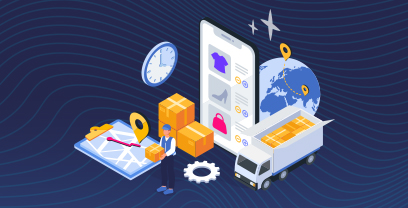The business case for data-driven transparency is not hard to make. In today’s dynamic, complex market, where procurement’s objectives continue to grow, data is the fuel for success.
In the latest Procurement Leaders Report and Survey, we ask top-performing CPO’s how they’re prioritizing data-enabled supply chain visibility–and the changes that need to be made.
While data quality cannot be perfected and some technological innovations aren’t quite ready for prime time, tremendous improvements are possible. Leaders who delay taking the necessary actions will increasingly find their organizations at a competitive disadvantage. Although a significant gap exists between procurement organizations’ supply chain transparency aspirations and their current capabilities, there are several steps teams can take that will yield a rapid boost to supplier visibility.
As supply chains become more widely understood as complex webs that include numerous overlaps and interdependencies in the sub tier, the need for data-driven transparency will only continue to increase. By taking steps now to improve supply chain visibility, procurement teams can position their organizations for success in the years to come.
With procurement continuing its evolution from back-office cost-savings generator to trusted business adviser, the importance of data-enabled supply chain visibility is not lost on procurement chiefs. Respondents to Procurement Leaders’ Ovation Pulse, an annual survey of the world’s most progressive CPOs, identified supply chain transparency as the second greatest opportunity for the function over the next three to five years.
This shift in thinking is not surprising. In a world where supply chains are increasingly complex and interconnected, the ability to see and manage them effectively has become essential to success. This is especially true given the current market conditions, which are characterized by volatile commodity prices, uncertain economic growth and shifting geopolitics..
By gaining greater visibility and ensuring buyers make decisions informed by high-quality data, procurement teams can better prepare for the future – both by foreseeing the rising tide of disruptions and by taking calculated and effective action to contain problems as they arise. Accessing supply chain data is difficult, but not impossible: it requires a holistic approach to data accessibility, quality and governance, the right blend of technology and a data-literate team that can capitalize on the opportunities it will present. Below,
- Improve Data Quality
- Ensure Accessibility
- Build a Data-literate Team
1. Improve Data Quality
Data is the lifeblood of supply chain transparency, but it can only be as good as what’s being inputted into the system. Too often, teams rely on manual processes and spreadsheets to track supplier performance, which not only leads to data entry errors but also makes it difficult to get an accurate and up-to-date view of the supply chain.
To improve data quality, teams need to invest in automation, both to streamline data entry and to ensure that information is being inputted correctly. In addition, they should consider implementing a centralized supplier performance management system that can provide visibility into all aspects of the supply chain, including visualization of the sub-tier. By centralizing supplier performance data, teams can more easily identify trends and issues, and take corrective action when necessary.
2. Ensure Accessibility
Having quality data is essential, but ultimately the decision-maker must have access to insights that drive value. This is where the right technology makes all the difference! Procurement must be able to access data at any time–to manage spend and suppliers. A central Source-to-Pay (S2P) platform that unifies data globally is the foundation for such accessibility. Data must be unified, with all information provided by internal users (i.e. performance assessments), 3rd party systems (i.e. carbon footprint or financial sources), and suppliers (i.e. certifications) linked to a single record which can be accessed from anywhere in the S2P process.
3. Build a Data-centric Team
Even the best supply chain visibility platform in the world is useless without a team that knows how to use it. To make the most of your supply chain data, you’ll need to build a team that’s literate in both supply chain management and data analysis.
The ideal candidate will have experience in both supply chain and data analytics, and be able to effectively translate between the two. They should also be comfortable working with different types of data, including financial data, supply and demand data, supplier performance data, and more.
With the right team in place, you’ll be able to make full use of your supply chain data and unlock the insights you need to improve visibility and drive better decision-making.
Making Data Quality a Priority
Data-driven supply chain transparency is essential for procurement teams that want to stay ahead of the curve. By making data quality a priority, ensuring accessibility with the right technology, and building a data-centric team, you’ll be on your way to gaining the insights you need to improve visibility and drive better decision-making.
Download the latest Procurement Leaders Report to access:
- CPO Surveys
- Interactive Graphs and Summaries
- Data-Driven Checklists for Success
- Steps to Build Solid Data Foundations
- Supplier Visibility Case Studies




